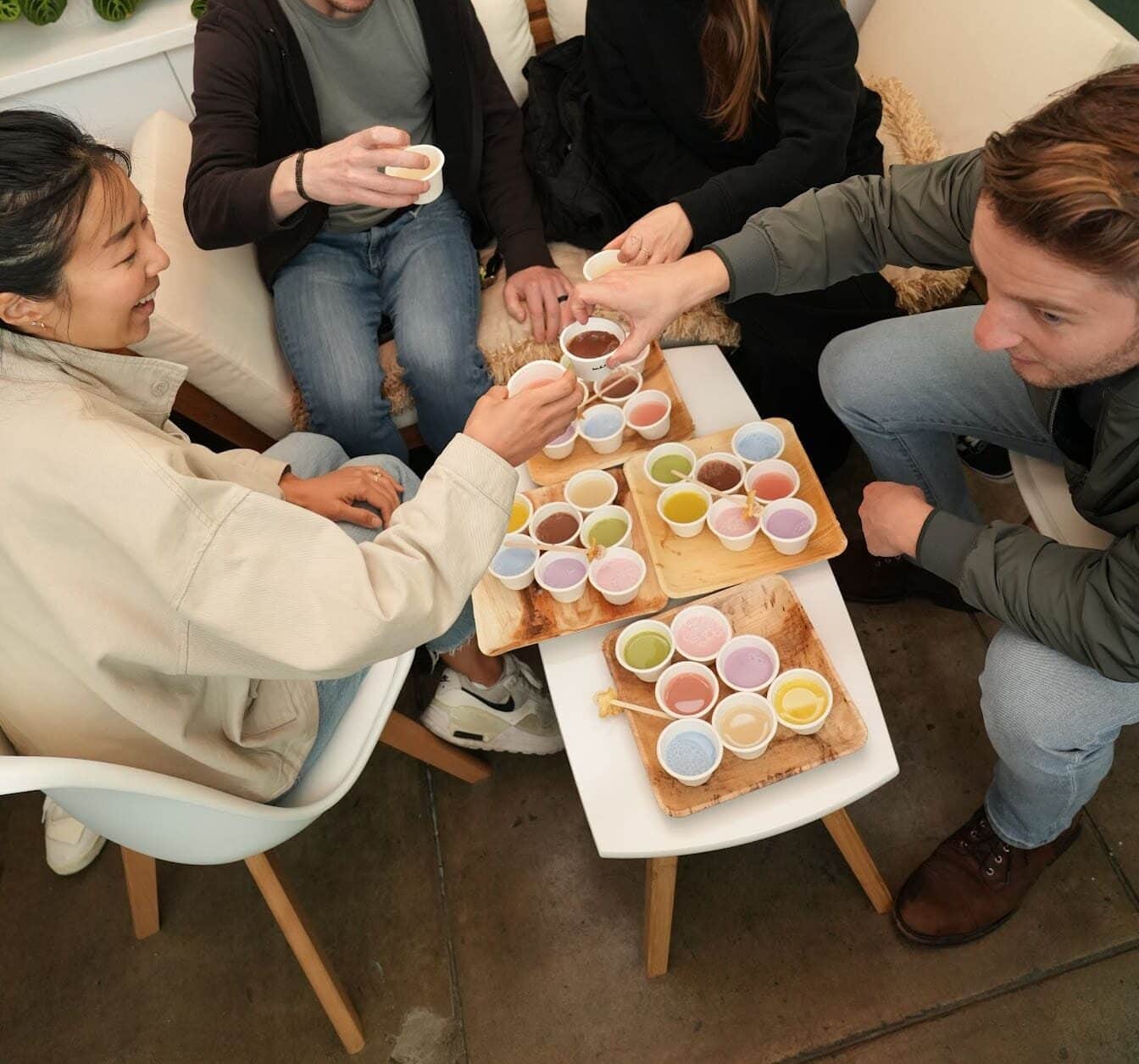In 2015, the University of Hawa’ii published a study reviewing kava’s toxicology and its apparent benefits. Researchers from the Pacific Islands and Western countries conducted the review to present different perspectives on the claims. This comes in response to increased bans and restrictions on kava in Europe due to reported liver damage caused by kava, which has since been invalidated.
Traditional uses of kava and the changes in modern consumption
Traditionally, kava has been used socially for personal and community traditions in the Pacific islands. It’s prepared into a tea using dried, ground powder from the kava roots submerged in water. This releases the kavalactones, which are the active ingredients of the kava. While the cultural practices and uses continue to evolve, there is a certain awareness and appreciation for the communal and traditional aspects of the drink. As use expands globally, other uses for kava have emerged. While it continues to be drunk socially, its health benefits are also becoming well-known. It has been classified as a natural health product in the United States and other countries. Modern kava bars are gaining in popularity, changing how kava is consumed. While almost all kava is grown in the Pacific islands, global demand is adding pressure to local farmers, and adding kava supplements on the market may not be of high quality.
Recent progress in kava’s toxicology
The study reviewed various studies in both clinical and experimental (animal) settings. The results varied, possibly due to confounding factors and the type of extract used in the study. There was a presented genetic component to the risk of kava’s toxicology, but more research is needed to understand this. Interaction with other compounds and medications seems to be the highest risk. Due to its calming effects on the brain, there is some concern about drug interactions with medications that work on the central nervous system (the brain and spinal cord). There is already an understanding of the negative effects of combining alcohol with kava. Another big concern is the strain and preparation. Traditionally, the kava drink is prepared using only the kava root. It’s been reported that using other parts of the plant (the leaves and stems) can contain less desired kavalactones, leading to negative effects and potential risk of toxicity.
The benefits of using kava
There is a long list of health benefits kava has been used for throughout history. In Pacific Island medicine, it’s been to help treat conditions like anxiety, stress, and depression, as well as urinary issues, menstrual problems and menopause symptoms, respiratory illnesses (e.g. asthma and TB), gastrointestinal issues, and skin conditions. These traditional uses have indicated that kava strain, plant part, and preparation are important considerations in treatment. In Western cultures, kava has been mostly used to help manage stress, sleep disorders, mild anxiety, and menopausal symptoms. There have even been clinical trials that show kava is more effective than placebos in treating anxiety. Some studies have even shown anti-cancer effects, though more research is needed to better understand this.
This research and other studies help to better understand kava and how it works. They also reveal important facts about kava’s toxicology.
Conclusions about kava’s toxicology
Connecting Western and Pacific Island perspectives has given us a broad spectrum perspective of kava’s toxicity and benefits. The kava strain and extraction are crucial to consider, as they will impact the number and type of kavalactones present. Western kava use suggests toxicity is rare with very low incidence. Most studies that found a toxic effect of kava involved other medications or substances. In Pacific Island cultures, kava’s toxicity is unheard of since no reported cases exist. There is a chance that this is due to underreporting or lack of public health data. It has been suggested that kava has an “entourage” effect, indicating that other compounds besides kavalactones may be involved and play a role in its poorly understood effects.
While traditional and cultural considerations are important and relevant, Western cultures need to be mindful of how kava is prepared and the type of kava they are taking to ensure the best experience.
Link to the original article
Contemporary Pacific and Western perspectives on `awa (Piper methysticum) toxicology https://pubmed.ncbi.nlm.nih.gov/25464054/
* Please note that the majority of kava research pertains to kava extracts, which often undergo significant processing and may contain additional ingredients and fillers that can influence their efficacy. It is crucial to consider this distinction when reading about kava studies. To draw an analogy, enjoying natural kava as a beverage can be likened to experiencing a freshly brewed cappuccino, whereas kava extracts are akin in functionality to a caffeine pill. Both forms have their unique benefits and can cater to different preferences and needs. While it’s helpful to understand research on kava extracts, please view it critically and remember that natural kava offers a uniquely holistic experience.


